Equipment Choices for Personal Care
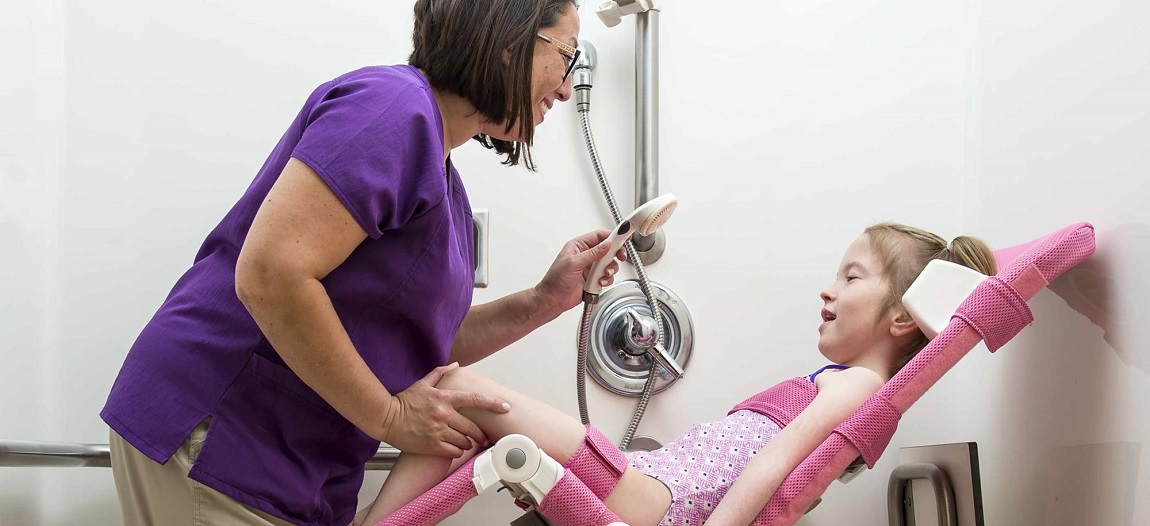
For people with a disability, functional seating is critical; however, it’s not only wheelchair seating that is typical for daily use. Hygiene regimes are also part of a person’s daily routine – whether an adult or child. Each client will have their own specific needs, preferences and desired outcomes for using their bath/hygiene equipment for specific activities, such as toileting and showering. Optimal positioning can be achieved safely if the right equipment is chosen.
“For most people, technology makes things easier. For people with disabilities, technology makes things possible”
Mary Pat Radabaugh, Director of IBM National Support Centre for Persons with Disabilities

Most hygiene equipment manufacturers would agree that, in the context of sitting, clients may have well-scripted wheelchairs, but unusable or even unsafe bath/hygiene equipment. In some cases, it may be that sitting needs weren’t a priority or that knowledge about assistive technlogy, and how they interact with different pieces of equipment, such as hygiene, have not been thought through.
Generally, seating interventions have four broad goals that overlap each other1: Comfort, Posture Management, Functioning (including safety) and Skin Integrity (pressure management/care). These same goals and positioning needs can apply to bath/hygiene equipment. If a client needs postural supports and options such as tilt in their wheelchair, it’s likely they’ll also need them in their bath/hygiene chair. In fact, even if the client doesn’t have a lot of postural support options in their wheelchair, they may need it in the bath/hygiene chair to meet their seating goals and needs1.
In most cases, clinical guidelines are used during assessment by a therapist, to determine if positioning options – such as tilt in space, postural support pads, positioning belts, frame configuration, and seat design – will help meet the clinical goals and needs of clients6. These guidelines can then be applied to features of hygiene equipment to safely achieve comfort, postural management, functional stability, and pressure management for the client. Tilt is a good option to help achieve stability and meet the goals of comfort, posture management and functioning during long personal care routines7.
Children’s’ needs are different

Bathing children with a disability, physical impairment, mental illness or sensory impairment can increase the trauma, difficulty and unpleasantness for both parent and child tenfold1. It is one of the most common parenting problems with many young children not liking bathing for a number of different reasons, including fear of water/not liking water on their head or face (sometimes a result of being overly receptive to sensory experiences due to skin thinness & sensitivity)6. Or that bath-time is seen as an unnecessary interruption to ‘play time’ or whatever fun they were having prior6. Generally bathing can be made easier, safer and more enjoyable for everyone if becomes a routine that is also fun and entertaining.
Care-Giver Care
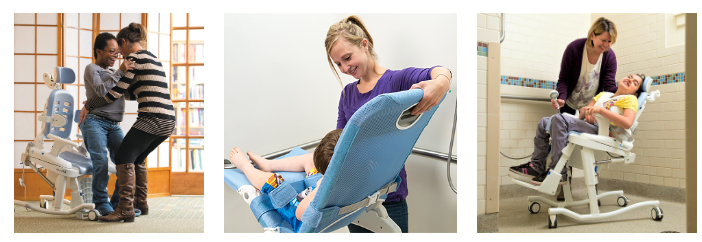
As a caregiver, looking after yourself is also critical and part of being safe. From 5 years +, it becomes more difficult bathe a child with a disability because a child is heavier and harder to handle. As a parent or carer, the constant strain of lifting a child in and out of a regular bath can become too much. At this stage you could consider a specialist bathing solution to increase safety for both child and parent/carer and help with manoeuvrability. Solutions like a self-controlled bath lift with leg support, a built-in transferable bath seat, rise & recline bath system and a height adjustable bath with hoist support system are just a few available solutions5. Current literature suggests that no caregiver should lift more than 16 kg (35 lbs) of a patient’s weight in ideal conditions, but caregivers routinely lift more than this to perform hygiene care, often on wet and slippery floors8.


Tilt-In-Space/Fixed Tilt Shower Commodes – Rifton HTS, 'Starfish Pro', 'Seahorse Plus', Juvo, 'Jellyfish'
Shower commode chairs are generally used by those who have difficulties standing up in the shower room; for instance, disabled individuals, elderly, or those recouping from personal injury. Using a shower commode helps prevent falls or harm to carers and clients alike. The seats range from basic and portable to innovative versions with Tilt-In-Space technology, operated either by (gas assisted or electric). Tilt-In-Space provides a change in position for clients who cannot independently shift their own body weight, help alleviate pressure, reduce the risk of skin breakdown and provide optimum seating position for the client. They offer a broad range of configurable options thanks to the numerous adjustment points, as well as adjustment features for the back rest, height, armrests, headrests and footrests which enable the chair to be tailored to the specific needs of the user.
Some of the features for Tilt-In-Space equipment include:
- Height adjustable back rests to increase postural support.
- Adjustable trunk support and hip angle for maximum postural control.
- Comfortable, pressure relieving materials that are specifically designed for hygiene situations.
- Robust durable frames to withstand extensive water exposure.
- Adjustable headrest arm for precise positioning.
- Adjustable leg rest and footrest options to achieve optimal comfort and seating position.
- In-built adjustable features that allow growth for the client.
Rifton HTS is a complete hygiene system with Tilt-In-Space functioning. Systems like this provide options such as sit-to-stand and easy transfer to shower or toilet. The Rifton HTS Tilt-In-Space base option has a gas assisted cylinder that tilts up to 5° forward for easier transfer, as well as 25° back for showering and hair washing. Many elements of the HTS are designed to fit a wide range of sizes, body types and special needs - allowing room for growth over time.
'Seahorse Plus' is another multi-purpose hygiene system that is ideal for all hygiene needs. It is height adjustable with four Tilt-In-Space positions. The gas assisted function provides 40° Tilt-In-Space which makes showering, hair washing and toileting so much easier. The range of sizes means it is ideal for young children through to young adults.
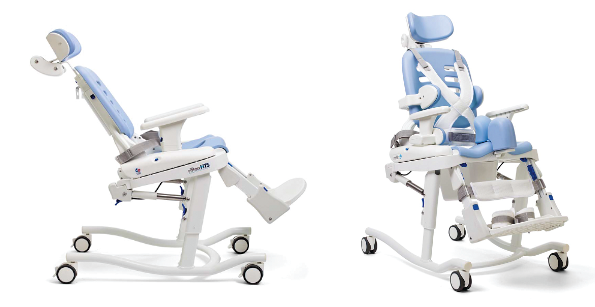
‘Starfish Pro’ has a patented Tilt-in-Space design that accommodates the most challenging postures. This combined shower and toilet chair is highly configurable, with leg pieces that can be adjusted to accommodate independent hip abduction or adduction, as well as specific leg length discrepancies; adjustable back and adjustable tilt and hip angle. The headrest has sectional support which adjust in height and position.
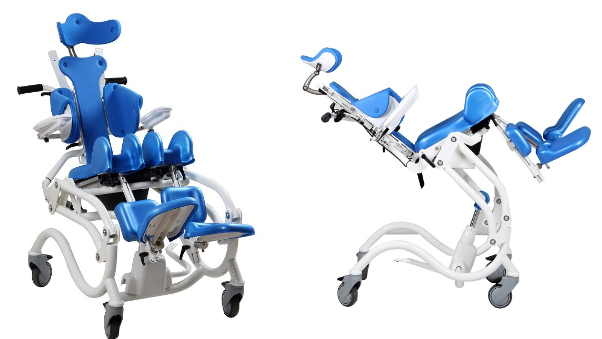
'Seahorse Plus' is another multi-purpose hygiene system that is ideal for all hygiene needs. It is height adjustable with four Tilt-In-Space positions. The gas assisted function provides 40° Tilt-In-Space, which makes showering, hair washing and toileting so much easier. The range of sizes means it is ideal for young children through to young adults.
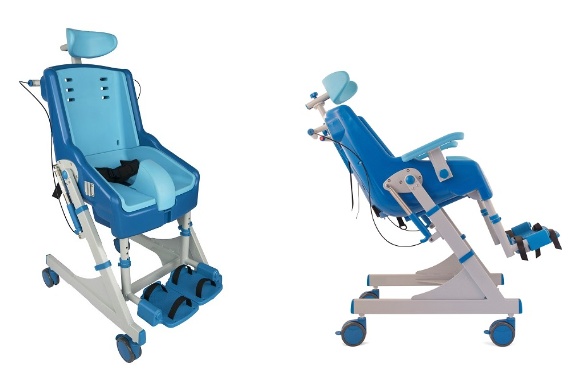
Juvo shower commodes provide innovative solutions for bathing needs. The Juvo Tilt-In-Space shower commode chair has a height versatility function with non-woven cosy back strap providing simple and easy access to good hygiene with full wide armrest structure. There is also a Self-propelled Shower Commode for people who do not have to rely on an assistance.
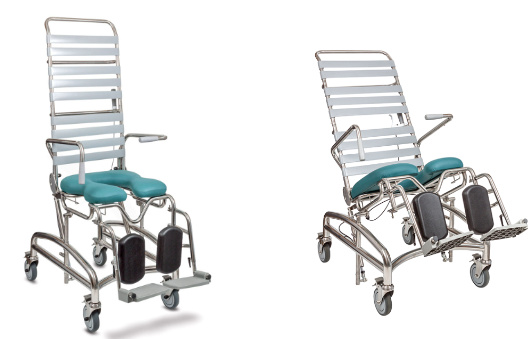
‘Jellyfish’ has a fixed-tilt function designed using high-tech Flexi-Tube upholstery which softens and moulds to most body shapes, making the showering process a more comfortable and enjoyable experience. It features a triangular shaped backrest that reclines and a 15º posterior seat angle. Other features include the head, leg and footrests which can be individually adjusted for optimum positioning, comfort and safety.
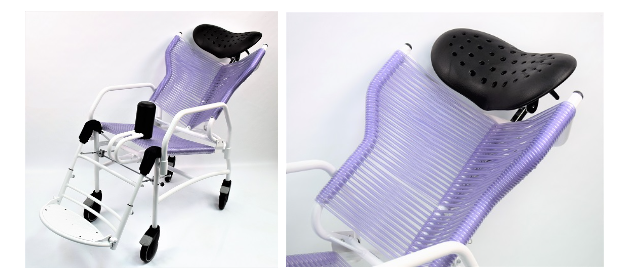
The ‘Otter’, ‘Wave’ and 'Octopus' bath chairs have their own unique features, but are all of them provide supportive, versatile options for effortless washing and showering. Bath chairs provide support and positioning for children and adults requiring special needs bathing systems. These bathing chairs feature multi-positioning seat backs that make bath time more comfortable for the client and they can also be repositioned for complete hygiene, cleansing and easy storage. Bath chairs are often available with bath stands, mobile shower bases and additional postural supports.
‘Otter’ Bath Chair provide full length trunk support, head support and adjustability in the seat, backrest and footrest positions. The angle-adjustable seat and back has five angle adjustments at 0°, 22.5°, 45°, 67.5° and 90°. The Otter is equipped with positioning straps which be placed anywhere along the length of the frame and can be removed if not required. The optional bath and shower stands raise the Otter height to a convenient level for easier transfer and safer carer access.

Rifton ‘Wave’ has several exceptional features that help make bathing a more relaxed and pleasant experience, in or out of baths and showers. The Wave chair is completely configurable with an easy range of incremental angle adjustments to the seat, back and calf rest enabling caregivers to provide postural support with appropriate hip and knee flexion and improve tolerance for the seated position during bathing. The wide seat accommodates larger clients and generous padding under the soft knit fabric helps protect skin integrity. The range of sizes fit on any of the three base options – bath stand, shower stand and bath transfer base.

Octopus Shower Chair is designed for simple functionality and adjustability! It features angle adjustable chair legs with articulating back and leg support, and a range of height/angle positions to make bath time easier and more fun, and it's a breeze to operate. The Octopus Shower Trolley allows you to use the Octopus Bath Chair as a roll-in shower and the base expands in length to accommodate any position the bath chair is placed in.

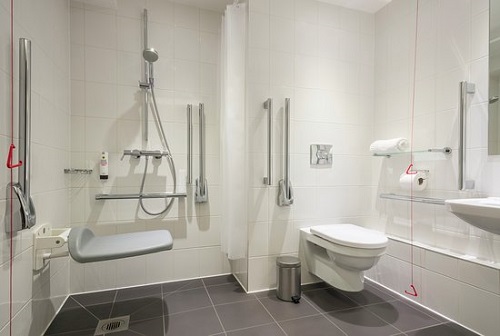
A few reminders to help everyone stay safe in the bathroom:
The Basics - it may sound obvious but observing bathroom safety basics is an essential first step. Check the water temperature is between 37°C and 38°C before you put your child in and never leave your child alone in the water or unsupervised. It’s a good idea to start by setting out everything you’ll need before bathing your child – towels, washcloth, soap and toys – so that everything is within easy reach and there isn’t a single moment you’re away from your child’s side5.
Non-slip flooring - traditional bath rugs and mats may make wheelchair manoeuvring in the bathroom difficulty, so finding a happy medium is a must. Inside the shower itself, non-slip flooring material that adheres to the floor and provides extra traction is a must. Outside the shower, textured tile and thin non-slip mats that adhere or are suctioned to the floor are a good choice3.
Lighting - consistent and accessible lighting is essential in this fall-prone environment, so wheelchair users should look at making sure light switches are easy to reach both inside and outside the bathroom door. Glass shower doors can also let more light filter into a shower than a thick shower curtain3. Lighting is also important when looking to overcome any form of sensory impairment. Dimmer lighting is advised to create a calmer and more relaxing environment5.
In Emergency - a telephone or medical alert call button system is a great idea. In the event of an accident like a fall, having quick and convenient access to calling for help can provide peace of mind and improve safety outcomes3.
Cleanliness - regularly ensure all equipment is clean and in good working order. Refer to the manufacturer’s guidelines for specific maintenance requirements.
Astris PME Consultants are trained professionals who can provide ideas and solutions to suit individual needs, as well as recommendations for ongoing hygiene equipment that are specific to individual requirements and environments. Astris PME Consultants can arrange a trial so feel free to call us to discuss your needs 1300 131 884 or contact us on
Note: Our Product Consultant will be able to advise you about the type of harness suitable for individual products.
- References:
- 1Australian Institute of Health and Welfare, 2004. Children with disabilities in Australia, Canberra: AIHW.
- 2,4https://www.moreability.co.uk
- 3https://www.christopherreeve.org/blog/daily-dose/smart-shower-design-and-safety-tips-for-wheelchair-users
- 5Raising Children Network https://raisingchildren.net.au/newborns/safety/bath-water-safety/bath-safety
- 6Families with special needs children: Family Health, Functioning and Care Burden; Carmen Caicedo; first published November 26,2014; https://doi.org/10.1177/10783890314561326
- 7RESNA Position on the Application of Tilt, Recline, and Elevating Legrests for Wheelchairs: 20

